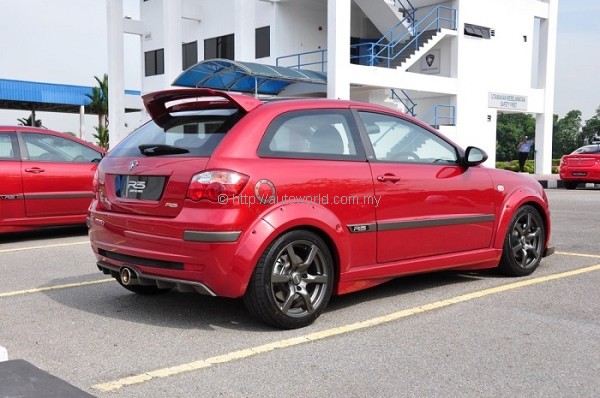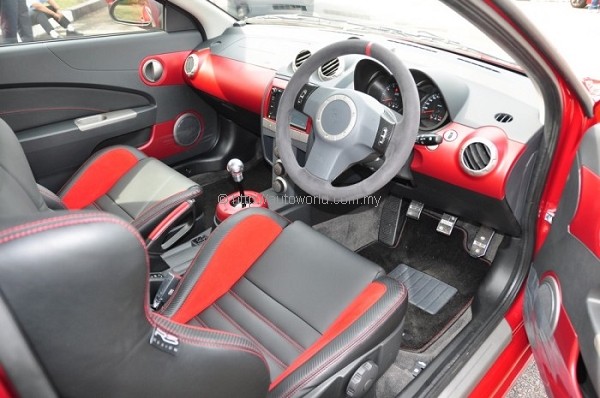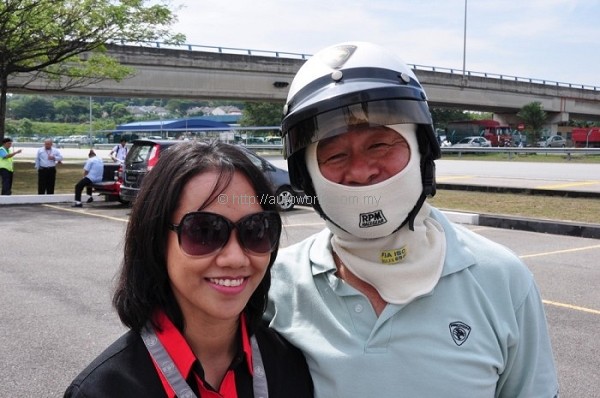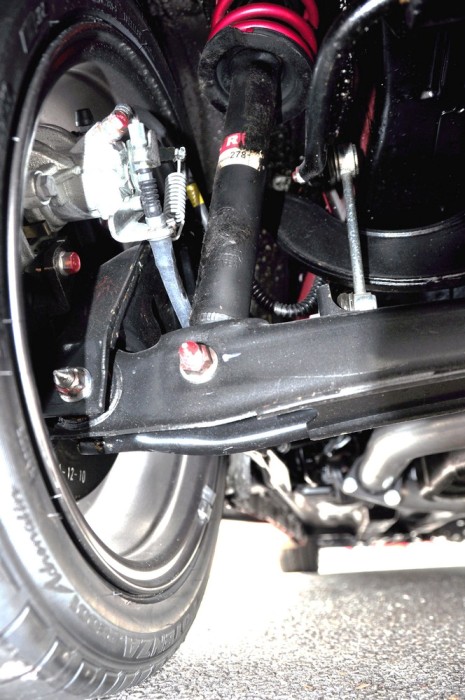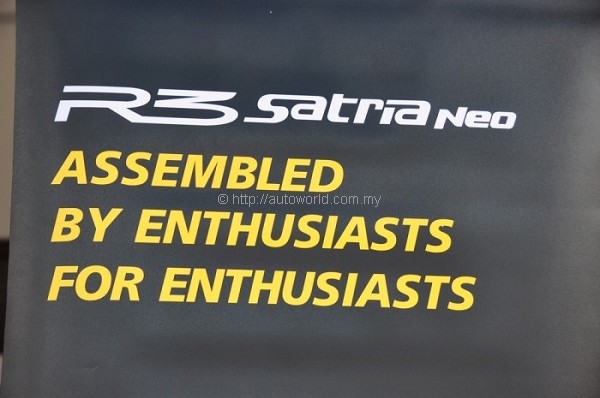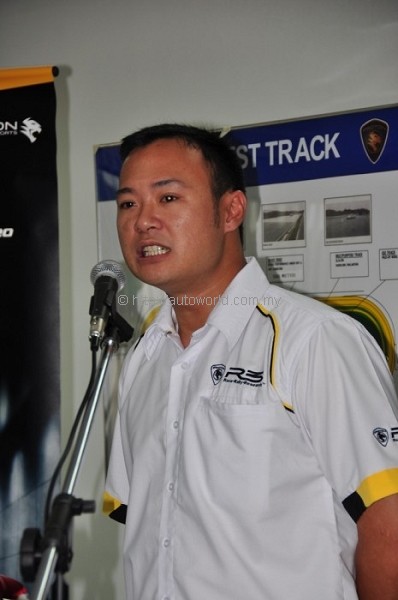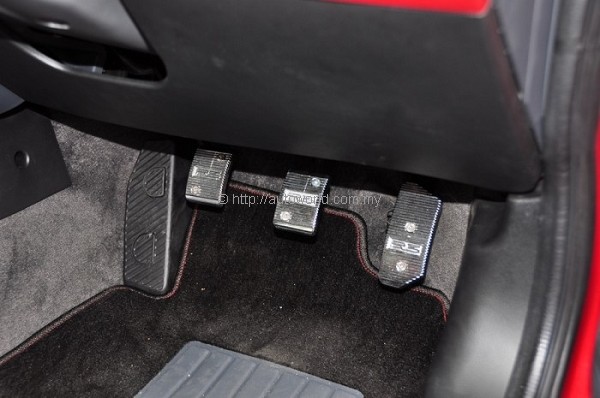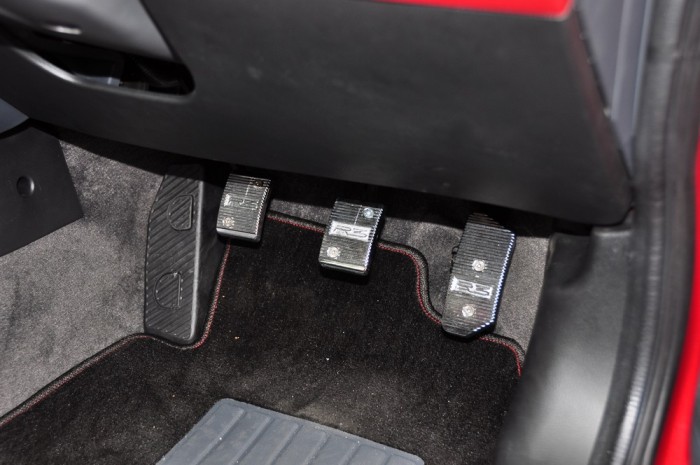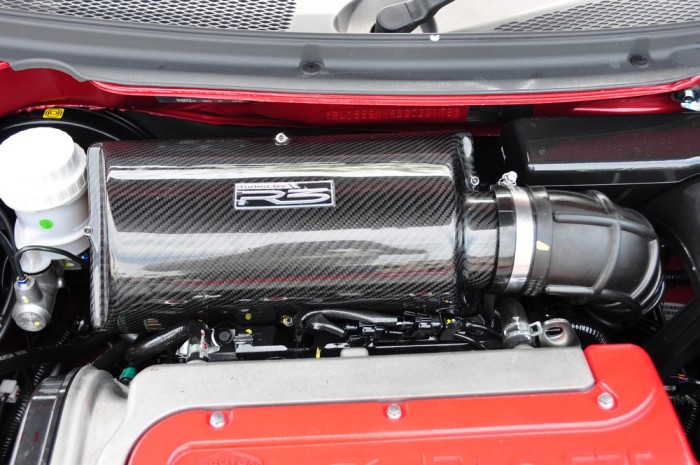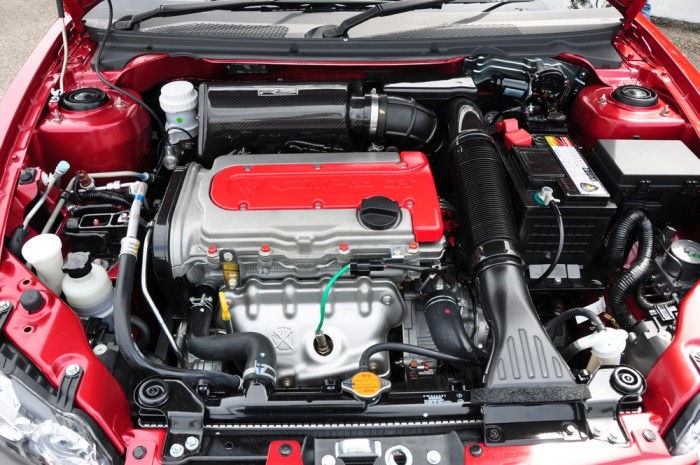Satria Neo R3 – First Impressions by YS Khong
Wednesday, 09 March 2011, Shah Alam – It was a relatively cool morning at the Proton Test track deep within the Proton manufacturing plant in Shah Alam today when we turned up at the oval test track. The gathering point was at the Proton Centre Of Excellence, and after signing away our lives on the standard indemnity form, the first batch of media were whisked over to the test track in a coach.
At the test track, to which most of us media are no strangers, there were three units at hand, one strictly for static photography, while the other two were at our disposal for a short test drive, accompanied by Proton R3 staff of course.
A short product brief by Tengku Djan Ley, head of R3, gave us a heads up on the differences between the standard Satria Neo CPS and the R3 variant. According to Djan, the R3 units are prepared in the main plant – the cars are sprayed in the beautiful Fire Red unique to the variant, together with a black roof. On the line, the R3 specially designed seats and trim is added on, before the cars are handed over to the R3 team for the finishing touches. I forgot to ask if the engines are pre-built by R3 and sent over to the line for insertion into the bodies, but suffice to say, there are some engine parts put in to deliver more power.
The engine has a carbon-fibre intake box and K & N air filter, 272 degree intake cam, and a 264 degree exhaust cam, developed by R3; it comes with a special Engine Control Unit – which can be tuned, but only by R3, and adjustable cam pulleys. The new output is 145 horsepower at 7,000 rpm, which is the same as the output on the Lotus R3 introduced last year. Zero to 100 km/h is claimed at 9.2 seconds while top speed is 205 km/h. not bad for a 1.6 litre engine.
Suspension is lowered slightly with the inclusion of specially developed R3 springs matched with sport-tuned shock absorbers based on the standard shockers, but re-valved for bound and rebound pressures. Suspension geometry is fine-tuned for handling. Rims are R3 lightweight alloys fitted with Bridgestone Adrenalin Potenza 001, 205/45 R16 tyres. For livelier performance, the transmission is a 5-speed manual, but with a lowered final drive (which I suspect comes from the Exora, 4.625:1 ratio, which is incidentally the same final drive ratio available on the Mitsubishi Mivec 1.6). Braking is improved with 400 degree Celsius high performance brake pads from Endless.
Exterior-wise, other than the special Fire red colour with the black roof, there is a splitter added under the R3 CPS front bumper, a R3 rear spoiler, and titanium-coloured side mouldings. Inside, the trim is red and black, with R3 Limited edition sports seats bound in leather with red stitching. The interior emanates a sport-like effect, sure to please the young and young at heart. Sitting in it, I felt very comfortable and very much at home – the R3 team has gone further to reduce the seat height by an inch, which I consider a great move that should be extended to the standard production car, the reasons for which I will not go into details about.
I got to test the car around the short circuit for one sighting lap, followed by one hot lap, followed by a run through the inner test course. The tests included driving over undulating surfaces, ribs on the road, a braking test from 100 to zero, and a slalom course, all designed to show us the driving characteristics and handling dynamics.
In terms of acceleration, the power starts to come in around the mid-four thousands in RPM, but the real kick comes on at around 5,500 rpm, after which the revolutions climb really quickly to 7,000 and over. I hit 7,500 rpm twice, and it didn’t seem to matter – nothing broke, and no pistons came out of the block. According to Tengku Djan, the engine in this tune has been tested for durability, and should be safe for consistent revving up to 7,200 rpm, and the occasional over-rev. On whether special bearings or internal parts are needed, he said that standard engine can take the punishment without any problems.
Around the two sharp curves at both the longitudinal ends, the R3 Neo was perfectly stable at 140 km/h. I was under instruction to keep it at this speed, but it sure felt like it could take a whole lot more speed. Anyway, it felt very planted. Later on, we went through a slalom in the inner track, and again the Neo R3 was everywhere I wanted it to be, inch-perfect past each alternating cone, and very neutral. I am pretty sure the Neo R3 will give an excellent account of itself when push comes to shove around winding roads. With the close ratio gears, it will have a gear for any imaginable speed. The only limitation would be when you find the 145 horses too tame – there is talk about a turbo charged version later on, but that would be another story. Just for our readers’ information, Proton have been working on a turbocharged system for the Exora, and it would be a natural progression to cascade this development down towards the Neo – I cannot imagine a scenario in which the Exora owner leans over to the Neo R3 car next to him at the traffic light, scoffs and says, “My Exora has more horses than your R3.”
Due to the short track distance, I did not get the opportunity to hit the claimed top speed, but other than that, I dare say the R3 Neo would be a great car, at a very affordable price, for the young enthusiast. I like it.





